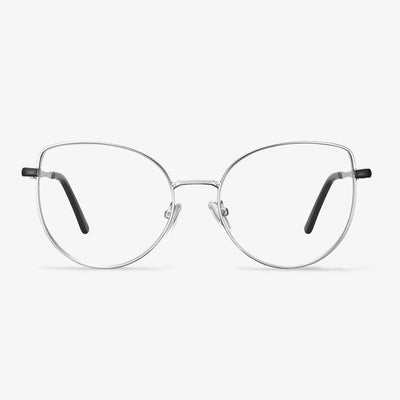How to Adjust Crooked Glasses
If one side of your frame looks higher than the other, you need to adjust the arms of your glasses. So, how to adjust glasses?
If the right side is higher than the left, you need to gently bend the left arm down at the hinge or where the arm bends behind your ear. If the left side is higher than the left, so just do the same action on the opposite side.
When adjusting crooked glasses, you need to adjust frames a little bit at a time to avoid overcompensating and possibly damaging your glasses. You can run the arms under the warm water but do not running the warm water over the lenses because it will affect the lens coating.
The origin of aspheric lens
The Visby glasses, unearthed in Gotland, Sweden, are the earliest aspheric lens found. The Vikings in the 11th century used it as a magnifying glass, and some of the best ones were made of silver, making them look like handicrafts. In 1667, Francis Smethwick grinds the first high-quality aspheric lenses and presents them to the Royal Society. That's a telescope with three aspheric elements. In 1956, Elgeet, which originally designed and manufactured optical instruments for the U.S. Navy, produced the world's first mass-produced aspheric lens for photography (Golden Navitar 12mm F1.2) for a 16mm film machine. Today, aspheric lenses are found in everything from tall telescopes to missile guidance systems to camera lenses. In the glasses we wear, the aspheric lens is familiar to consumers.
OSKIDE night driving glasses
With excellent night vision, this product can provide you with clear vision when driving at night, on cloudy or rainy days. In addition, it can protect you from the sun's harmful rays and bright headlights. Made of durable materials, they are flexible enough to withstand strenuous exercise and high-intensity outdoor activities. Equipped with polarizing lenses, they reduce glare and improve clarity when bright lights may be distracting, so they are perfect for sunny days or night driving. And it has UV 400 UV protection function. It protects your eyes from harmful ultraviolet and blue light.
Who are suitable for progressive lenses?
A progressive piece is suitable for most old people to wear. The proper person is the one who has the visual needs of the long, medium and short distance cares about beauty, and is willing to accept new things. In order to avoid binocular vertical prism differences, for the wearer whose equivalent spherical lens with anisometropia is more than 2D, especially if the difference in refractive power of the vertical meridian is more than 2D, it should be checked with caution. Opticians whose vision needs do not match the progressive lens design, like dentists, often experience blurred vision when working with the far side of the lens to look closer.
How to Pop Lenses Out of Glasses with Plastic Frames?
In this section, we will show you how to take glasses out of plastic frames. It would be much easier to remove lenses from plastic frames because lenses are not fitted as tightly in them as in metal frames.
Now, here is the tutorial.
- Many plastic lenses will come out easily as you push through your thumb from the inner side and fix your fingers on the other side.
- If they do not come off, you can choose to heat the plastic a little bit so that it expands and allows the lenses to come out.
- To heat the plastic frames, you can immerse the glasses in a bowl of hot water. The water should be hot, not warm but of course only as much as you can handle amicably.
- Be careful to not drop your lenses in the bowl. Dry them with a no microfiber cloth and then you can remove them. You can’t use any towels because those can damage any blue light or anti reflective covering.
After all steps are finished, you can remove lenses from glasses.
Disadvantages of progressive lenses
Wearing progressive multifocal glasses for the first time may cause slight dizziness and shaking when walking. Be careful when moving up the stairs. The perception of space changes, the perception of the distance of the object, and the perception of depth have changed. New wearers should not drive immediately and do vigorous exercise. When you look close, you need to turn your eyes down, and your eyes are mildly uncomfortable. Seeing the object through the blurred vision area around the lens, the object becomes blurred. Therefore, when new wearers look at things, turn their heads more, turn their eyes less, try to use the far-distance zone, the near-distance zone, and the middle-distance zone to see the object.
The resurgence of celluloid glasses
However, in recent years, celluloid glasses have quietly returned to warm; It all started with a niche Japanese brand of handmade eyewear.
Most of Japan's top hand-made celluloid glasses are made in Mako Prefecture and are a favorite of many celebrities. Celluloid is a plasticizer with nitrocellulose as the main raw material. Cotton, pulp, and other fibers make up 70% of the raw material, which is mixed with camphor. Although the color is relatively limited, it has a unique material texture and texture, so Japanese handmade frame makers have been insisting on using it. Moreover, because celluloid is pretty stable when it dries, it can be shaped into a finer shape, keeping the frame intact even without metal leg cores.


















































